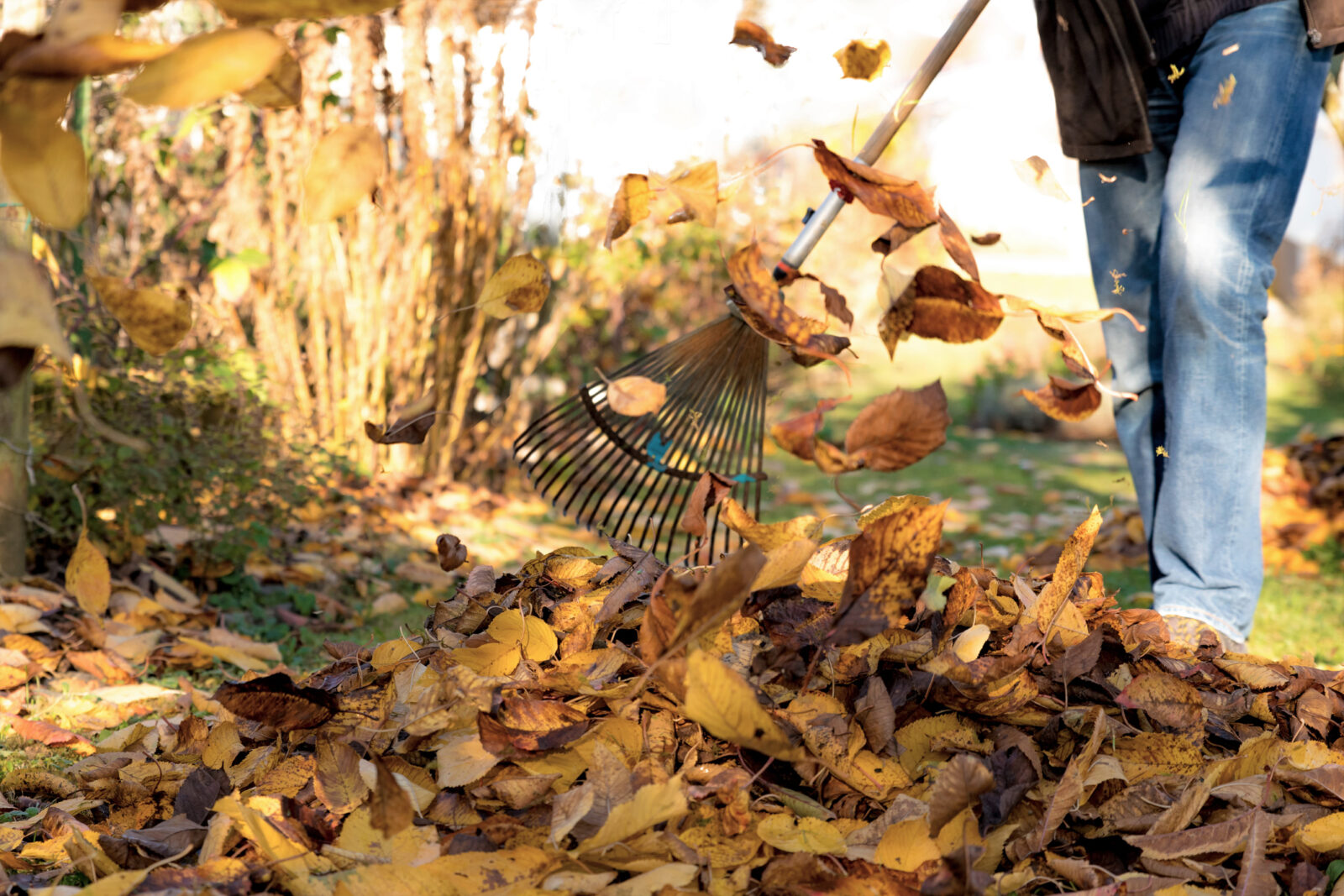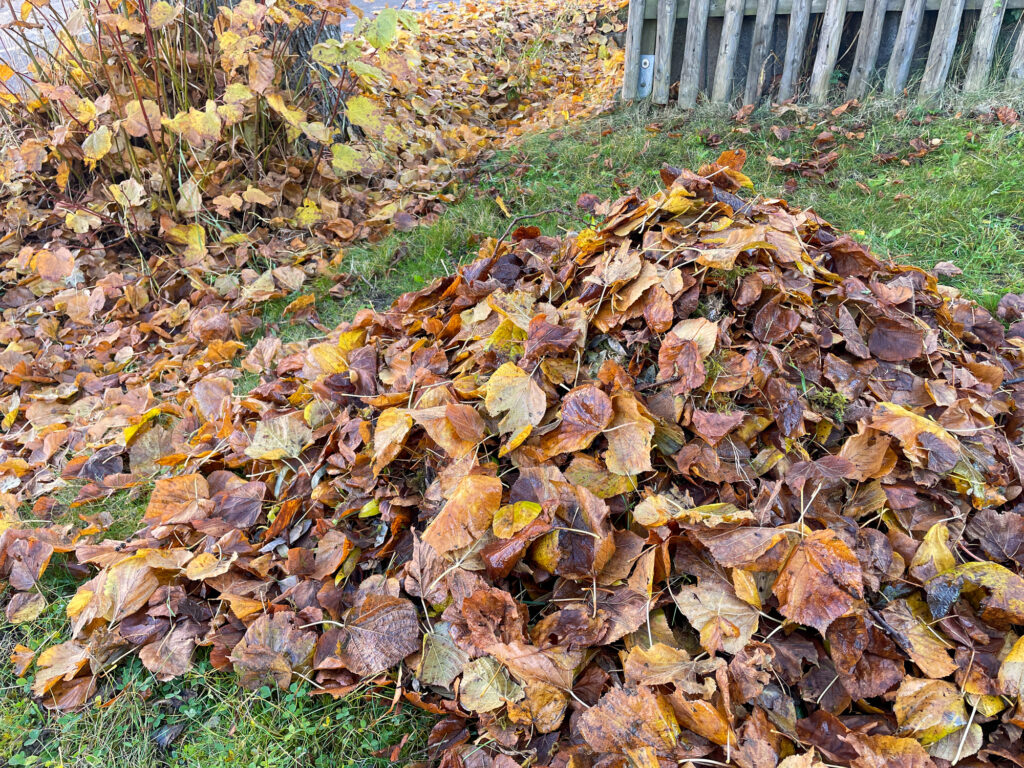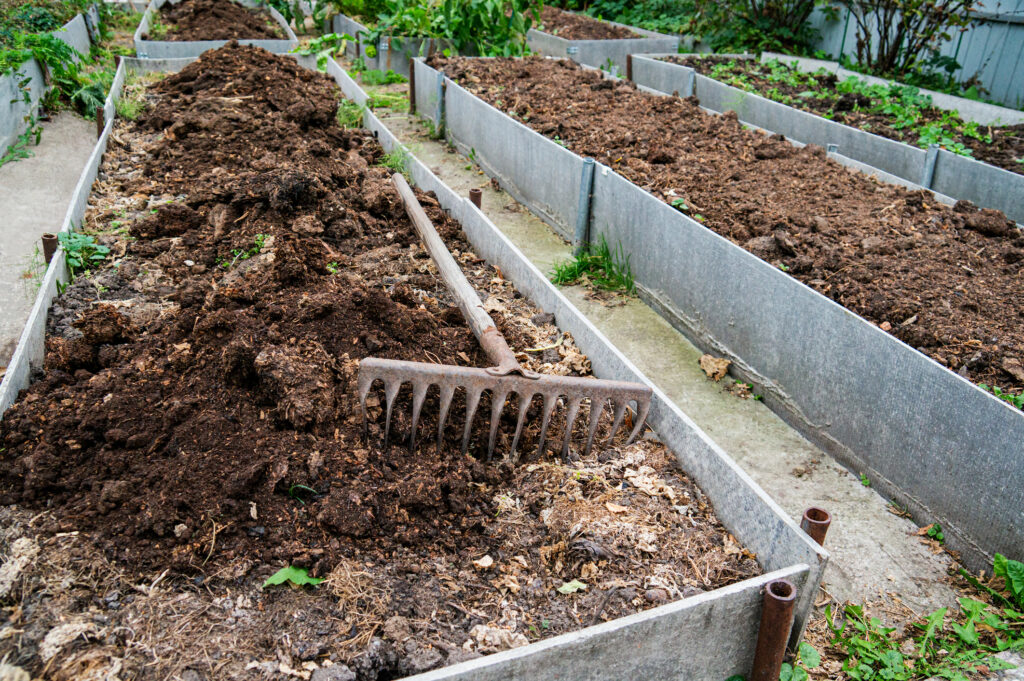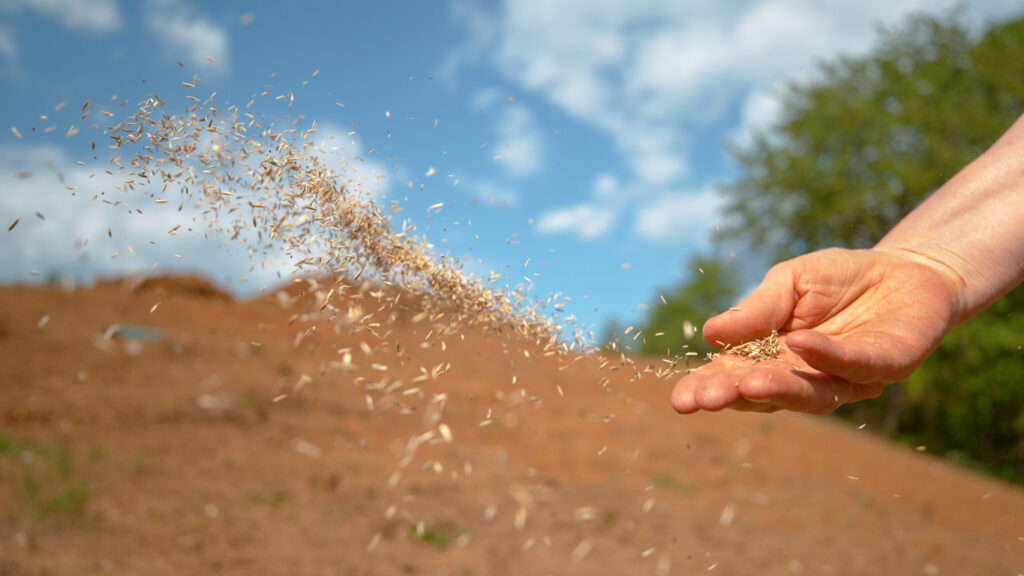This Fall, Go Easy on the Lawn and Garden Cleanup
 September 19, 2023
September 19, 2023Are you getting ready to tuck your garden beds away for the fall? This year, try taking a more light-handed approach to “garden sanitation”—your back will get a break, and so will Mother Nature.
The long-accepted approach to fall lawn and garden care has been to rake every leaf and prune, chop or pull just about every plant almost as soon as the growing season slows.
But as we’ve learned, those heavy-handed fall cleanups do far more harm than good. Many beneficial insects—including fireflies, bumblebees, millipedes, and spiders—rely on leaf litter for food and shelter. Moths and butterflies, in the form of eggs or chrysalises, use leaf litter to overwinter. And a host of animals, from birds to chipmunks to turtles and more, find their food in leaf litter.
Likewise, cutting some plants down to the ground and heavily pruning others denies animals and insects cover and food during months in which they need it the most.
Experts say instead, we should leave the leaves, go easy on the pruning, and wait until late spring/early summer to do a deeper cleanup.
A Common-Sense Approach
While it would be great to just skip traditional fall lawn and garden chores altogether, we all know the reality is different. There are homeowners associations, neighborhood standards, and even safety considerations to contend with—some type of fall cleanup is a must.

If you can’t just leave the leaves, consider putting them all — or at least some of them — in a pile at the back of the yard, and leaving them undisturbed until summer. Or clean out only the beds that face the street—or your neighbors’ line of sight—and leave a layer of leaves on the others. And if you absolutely must remove the leaves, at least compost them—don’t burn them, rake them into the street, or dump them into a waterway!
The same goes for pruning and trimming. Be more selective, and consider leaving a few plants as-is until next spring. Ornamental grasses, for instance, can become a striking landscape feature in the winter, and won’t suffer if you wait a few months to mow them down. You should also leave plants like crabapples, teasel, sunflowers, and coneflowers, as all provide food for birds in colder months. You can tidy them up in spring.
All in on the Vegetable Garden
Unlike flower gardens, vegetable gardens require a different fall cleanup approach to keep pests and disease from overwintering.
To start with, all tender plants, including tomatoes, peppers, corn, beans, and squashes, should be ripped out and composted. Any sick plants, including those with mold or mildew on the leaves, should be disposed of separately, to avoid overwintering disease.
Plants such as brussels sprouts, collards, kale, and other hardy vegetables can be left in the ground and harvested throughout the winter. Root crops must be dug up before the ground freezes.
Next, add a few inches of mulch, compost, or manure to any bare ground in the garden plot. The nutrients will have time to sink in and be ready to get things growing in spring.
If you don’t have mulch, compost, or manure, you can plant a cover crop to improve the soil. Cover crops help keep soil from eroding, replace and retain some essential soil nutrients, and add organic material to the soil in spring, when they get turned over.
According to the Penn State Extension, alfalfa, crimson clover, and hairy vetch “fix” nitrogen in the soil, which means they convert the nitrogen into a food usable by plants. Barley, oats, winter rye, and winter wheat add organic material and improve soil structure.

The Extension advises fall planting of cover crops “between the last of your warm season vegetables to give them a head start before the weather cools.”
Another option is to cover bare soil with carpet, black plastic, or old carpet to kill any existing weeds and prevent new ones from getting started.
Get Trees, Shrubs, Perennials Started
Now is also a great time to plan out landscape plants and flower beds for next year and beyond.
If you get trees, shrubs, and perennials like salvia, coreopsis, dianthus, phlox, sedum, and many others in the ground now, late summer/ early fall planting will give them plenty of time to set root before they go dormant in the cold weather. Come spring, they’ll perk up and have a head start on the growing season.
Bulbs such as tulips, hyacinths, narcissus, crocuses, and iris will provide spring and summer color if you plant them now.
Be sure to apply organic fertilizer, a layer of mulch, and continue to water well to ensure they get the best start possible.
Plant Your Lawn in Fall

Finally, if your lawn is looking ragged, now is a great time to re-seed (or plant a new one).
According to the Penn State Extension, most of our Pennsylvania lawns are made up of “cool season” grasses, “including Kentucky bluegrass (Poa pratensis), perennial ryegrass (Loliam perenne), and fine fescues (Festuca spp.)”
That makes late summer and early fall the perfect times to plant a new lawn, or reseed/patch an existing one. Just remember that proper watering is critical for both germination and success—which is why the cooler months are easier on tender green shoots, and your water bill.